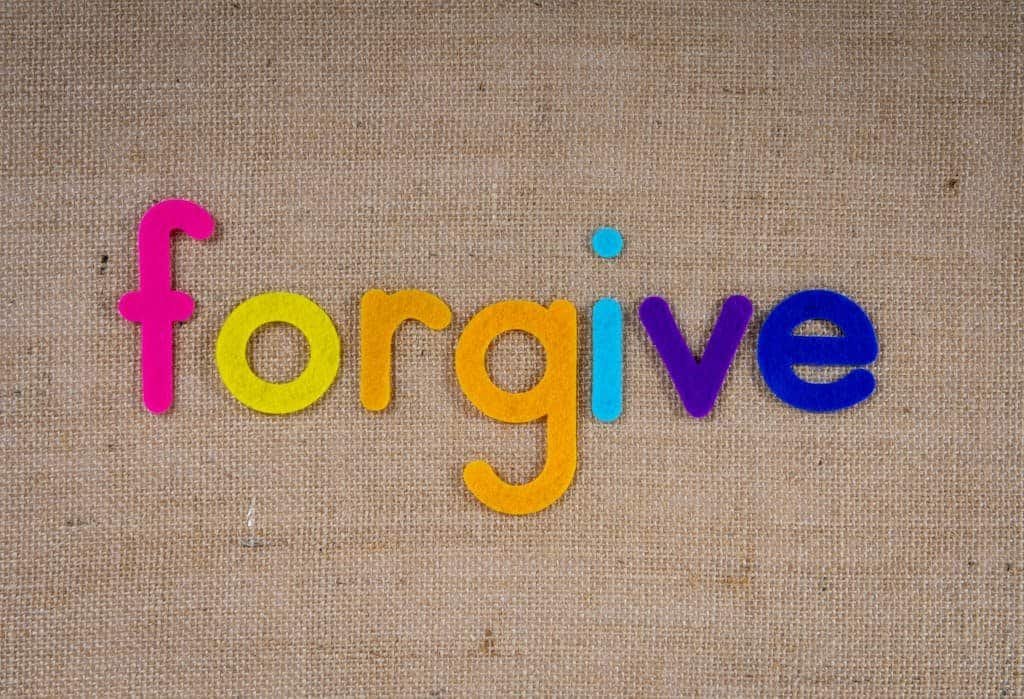Understanding and Acknowledging Your Role in Trauma and Healing
The Importance of Self-Reflection
Understanding and acknowledging one’s role in trauma and healing is a significant step toward personal transformation. Self-reflection is a powerful tool that aids individuals in examining and recognizing their contributions to their own experiences. This process is not about assigning blame but about gaining clarity and insight, which can be instrumental in healing and growth.
Often, trauma leaves individuals feeling powerless and overwhelmed but engaging in self-reflection can shift one’s perspective from being a passive victim to an active participant in one’s own recovery. By taking responsibility for one’s healing journey, individuals can reclaim their sense of agency and discover a newfound strength. This empowerment is critical to the transformative process, as it motivates individuals to make conscious and positive changes in their lives.
Furthermore, self-reflection fosters a deeper understanding of one’s inner child – the part of our psyche that holds our childhood experiences, both positive and negative. By acknowledging the needs and wounds of the inner child, individuals can begin to nurture and heal these core aspects. This awareness can provide profound insights into current behaviors and emotional patterns, allowing for more compassionate self-care and healthier relationships.
The importance of self-reflection in the context of trauma and healing cannot be overstated. It sets the stage for a holistic approach to recovery, where individuals take an active role in their transformation journey. Examining past experiences and understanding their impact on the present can pave the way for a future marked by resilience, growth, and emotional well-being. The process of self-reflection, therefore, becomes a cornerstone of genuine healing and ongoing personal development.

Defining Trauma: What It Is and Its Effects
Trauma is a complex and multifaceted experience that significantly impacts an individual’s mental, emotional, and physical well-being. It is generally understood as an emotional response to an overwhelming event or series of events that an individual perceives as highly stressful or harmful. Trauma can be categorized into various types, echoing different experiences and reactions.
- Emotional trauma often arises from situations that result in intense feelings of helplessness, fear, or worthlessness. This type of trauma can stem from interpersonal relationships, such as emotional abuse, neglect, or betrayal.
- Psychological trauma, on the other hand, may involve enduring distress that shapes one’s perception of safety and control, often originating from manipulative or coercive circumstances.
- Physical trauma includes injuries or harm resulting from accidents, abuse, or other violent acts, leaving not just physical scars but also profound emotional and psychological impacts.
Psychological Signs:
- Flashbacks: Recurring, distressing memories of the traumatic event replaying in the mind as if it’s happening again in the present.
- Anxiety: Persistent and overwhelming feelings of worry or fear that can be debilitating, often disrupting daily activities.
- Depression: A prolonged sense of sadness, hopelessness, or worthlessness, often leading to a loss of interest in activities once enjoyed.
Physical Signs:
- Fatigue: Chronic tiredness or a lack of energy, even after adequate sleep, that interferes with daily functioning.
- Insomnia: Difficulty falling asleep, staying asleep, or experiencing restful sleep, which can exacerbate other symptoms of trauma.
- Physical Ailments: Unexplained aches, pains, or other symptoms such as headaches or gastrointestinal issues that don’t seem to have a medical cause but are linked to stress or anxiety.
The effects of trauma can be both immediate and prolonged, subtly influencing various aspects of an individual’s life. Short-term effects may include shock, denial, and unpredictable emotions like anger or sadness. Physiological responses like changes in appetite, sleep disturbances, and heightened anxiety are also common. Over time, if not addressed, trauma can lead to more severe consequences, including the development of mental health disorders such as post-traumatic stress disorder (PTSD), depression, and anxiety disorders.
Long-term effects of trauma are particularly pernicious as they may infiltrate daily functioning. Individuals may experience chronic health issues, persistent mental health struggles, and difficulties maintaining relationships or job stability. Moreover, unresolved trauma can hinder personal growth and transformation, trapping individuals in cycles of distress and pain. Healing from trauma, therefore, necessitates a holistic approach that considers the intricate interplay of emotional, psychological, and physical dimensions.
Importantly, acknowledging and addressing inner child wounds—that part of oneself that stores traumatic memories from childhood—can significantly aid in the healing journey. Therapeutic interventions emphasizing compassionate self-exploration and mindfulness practice are key strategies for promoting transformative healing and resilience.
Recognizing Patterns and Personal Behaviors
Understanding one’s role in trauma and healing necessitates a deep recognition of personal behavior patterns, which often contribute to the perpetuation of trauma. Many individuals unknowingly engage in behaviors that serve as defense mechanisms, shielding them from emotional pain but simultaneously inhibiting their healing. These patterns may manifest as self-sabotaging behaviors, creating a cycle of repeated trauma that can be difficult to break.
Common defense mechanisms include denial, repression, and projection. Denial involves refusing to acknowledge the reality of a traumatic event, while repression pushes painful memories out of conscious awareness. Projection involves attributing undesirable feelings or thoughts to others, thereby avoiding internal conflict. These mechanisms, while initially protective, can hinder an individual’s ability to confront and process trauma, ultimately blocking the path to healing.
Self-sabotaging behaviors often stem from deep-seated insecurities shaped by past trauma. These behaviors might include procrastination, negative self-talk, or engaging in unhealthy relationships. For example, an individual may procrastinate on tasks that could lead to personal growth due to a fear of failure ingrained from past experiences. Similarly, negative self-talk reinforces feelings of unworthiness, further entrenching the person in a state of trauma.
Critical self-examination is essential in recognizing these patterns. Individuals must ask themselves probing questions about their actions and reactions. Are they avoiding certain emotions or situations? Do they find themselves in recurring, negative scenarios? This reflective process allows individuals to identify and understand their unconscious behaviors, facilitating a transformational journey toward healing.
By acknowledging and addressing these defense mechanisms and self-sabotaging behaviors, individuals can begin to dismantle the barriers that trauma has erected. This awareness is a crucial step in the broader healing journey, enabling a more profound connection with one’s inner child and fostering holistic transformation.

The Role of Accountability in Healing
Accountability stands as a cornerstone in the journey of trauma healing. It signifies a conscious effort to acknowledge one’s actions and consequences, which marks a pivotal step toward transformation. Often, the cycle of trauma is perpetuated through denial and avoidance. By taking responsibility, individuals expose the root causes and eliminate the shadows that sustain emotional distress.
Owning one’s actions necessitates a thorough self-examination. This process entails recognizing past behaviors and understanding their impacts on oneself and others. It fosters a deeper connection with the inner child, a concept representing the innocent, vulnerable parts of the self deeply affected by trauma. Addressing the inner child helps integrate these fragmented aspects, enabling holistic healing.
Moreover, accountability is instrumental in crafting effective therapeutic strategies. Therapists often emphasize the importance of recognizing one’s role in past events to break free from repetitive, harmful patterns. This practice does not place undue blame but rather empowers individuals to take control of their healing process. By honestly facing past actions, individuals can develop resilient coping mechanisms and cultivate healthier relationships.
By embracing accountability, individuals also facilitate a clearer vision of their transformation trajectory. This clarity is essential for setting realistic goals and milestones in the healing journey. Acknowledging missteps and making amends where possible alleviates guilt and builds a foundation of trust and integrity, essential components for transformative growth.
In essence, accountability’s role in trauma healing is multifaceted. It serves as a pathway to uncovering and addressing deep-seated issues, aligning therapeutic efforts, and fostering growth and self-awareness. Through accountability, individuals can navigate the complexities of their past with a resolve that paves the way for profound and lasting healing.
Tools for Self-Assessment
Embarking on a journey to understand one’s role in trauma and healing necessitates a thorough self-assessment. An effective starting point involves introspective methods that aid in identifying personal contributions to one’s trauma and facilitate subsequent healing. Journaling is a primary tool, providing a structured means to explore emotions, thoughts, and experiences. Individuals gain clarity on patterns and triggers by regularly documenting feelings and reflections. This practice enhances self-awareness and serves as a historical record to track progress over time.
Mindfulness exercises are another pivotal component of self-assessment. Mindfulness cultivates an acute awareness of the present moment, allowing individuals to observe their thoughts and emotions without judgment. Techniques such as deep breathing, body scanning, and mindful meditation encourage a deeper connection with the inner child, helping to uncover buried emotions that contribute to trauma. Consistent mindfulness practice fosters a balanced mental state conducive to healing and transformation.
Another vital aspect of self-assessment is seeking feedback from trusted individuals. These can be friends, family members, or mental health professionals who provide an external perspective on one’s behavior and experiences. Honest and constructive feedback can shed light on blind spots and areas for growth that may not be apparent through self-reflection alone. This collaborative approach can accelerate healing by offering support and fostering a deeper understanding of one’s trauma.
Integrating these tools into daily routines creates a comprehensive self-assessment strategy. Journaling, mindfulness, and external feedback each contribute uniquely to the process. Together, they empower individuals to take an active role in their trauma recovery, paving the way for profound personal transformation. Awareness is the first step towards healing, and these tools bring clarity to an otherwise complex and nuanced journey.
Developing a Healing Plan
Constructing a personalized healing plan is essential when embarking on the journey of trauma recovery. This process involves setting realistic goals, seeking professional help, and integrating effective self-care practices. Doing so can create a comprehensive roadmap for healing and transformation.
First, it is crucial to set realistic and achievable goals. Begin by identifying specific areas where you would like to see improvement. This could range from managing anxiety to rebuilding trust in relationships. Break these goals into smaller, manageable steps to avoid feeling overwhelmed and track your progress. By maintaining a clear focus, you can celebrate small victories, reinforcing your commitment to healing.
Seeking professional help is another pivotal component of a successful healing plan. Collaborating with qualified trauma therapists or counselors provides the support and guidance needed to navigate the complexities of trauma and its impacts. Professionals can tailor therapeutic approaches to your needs, incorporating Cognitive Behavioral Therapy (CBT), Eye Movement Desensitization and Reprocessing (EMDR), or other evidence-based treatments. Their expertise provides a safe space for exploring deeper emotional wounds and fosters inner child healing.
Integrating self-care practices is also vital in the recovery process. Self-care encompasses a wide range of activities that promote physical, emotional, and mental well-being. Regular exercise, adequate sleep, and a balanced diet are foundational elements. Additionally, mindfulness practices such as meditation, yoga, or journaling can alleviate stress and enhance self-awareness. Engaging in hobbies or creative outlets can also provide a sense of accomplishment and joy.
Ultimately, developing a healing plan tailored to your unique needs empowers you to actively participate in your recovery. By combining realistic goal-setting, professional support, and consistent self-care, you can foster an environment conducive to healing and transformation. Although the journey may be challenging, these strategies build a solid foundation for lasting recovery and personal growth.

The Power of Forgiveness and Letting Go
Forgiveness is one of the most potent forces in the healing process, providing a pathway for emotional and psychological recuperation. At its core, forgiveness is not about condoning the actions that caused trauma but rather about releasing the grip of resentment and anger that impede personal growth. When individuals choose to forgive, they often pave the way for deeper levels of introspection, enabling them to identify and address their inner child’s unresolved pain.
Forgiving oneself can sometimes be more challenging than forgiving others. This self-directed forgiveness is crucial for healing, particularly when trauma has led to feelings of guilt or shame. By striving for self-compassion, individuals can recognize and dismantle the negative self-narratives that have kept them locked in a cycle of self-reproach. Therapeutic practices such as mindfulness and reflective journaling can support this journey by grounding the individual in their present reality, allowing them to move beyond past traumas.
Similarly, the act of forgiving others is essential for releasing the emotional shackles that hinder transformation. Holding onto grudges can cause prolonged stress and anxiety, catalyzing a perpetuation of the trauma’s impact on one’s psychological well-being. Releasing these negative emotions contributes to a sense of liberation, opening doors to renewed relationships and personal development. Importantly, letting go doesn’t mean erasing memories or ignoring past hurt; rather, it signifies choosing peace and freeing oneself from bitterness.
Incorporating forgiveness into the healing process significantly enhances emotional resilience, transforming the individual’s approach toward future adversities. It cultivates a balanced perspective where past trauma becomes a source of strength rather than a focal point of hurt. Thus, forgiveness and letting go are invaluable tools in the journey toward holistic healing and personal empowerment, marking a definitive step toward self-discovery and emotional freedom.
Embracing a New Beginning
In embracing the journey of trauma and healing, one must recognize that acknowledging their role isn’t about casting blame but seizing empowerment. When we clearly understand the dynamics that have fueled our inner conflicts, we equip ourselves with the tools for genuine transformation. Healing is not a linear path but a multifaceted process often requiring a sincere examination of our past actions and beliefs that have contributed to our present state.
By admitting our part in perpetuating certain trauma, we open the door to profound self-reflection and growth. This acknowledgment is the first pivotal step toward reclaiming our personal power and initiating the journey toward recovery. As we peel back the layers of our emotional wounds, we foster our resilience and enhance our capacity to heal our inner child, who has long carried these burdens.
Embracing this challenging yet transformative journey requires courage and commitment. As we begin to understand our role in our trauma, we can also start to identify and implement healthier patterns and boundaries. This act facilitates our healing process and serves as a new foundation for a more balanced and fulfilling life.
To move forward, we must approach ourselves with compassion and patience. Healing is a gradual process marked by incremental progress and occasional setbacks. However, each stride we take towards understanding and healing contributes to our overall transformation, making us not only survivors but thrivers in the face of adversity.
As we embrace this new beginning, let us acknowledge the power within us to heal and transform, paving the way toward a brighter, more empowered future.



